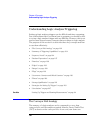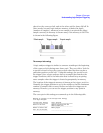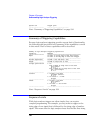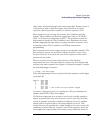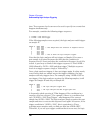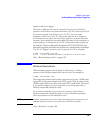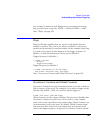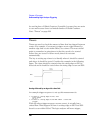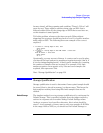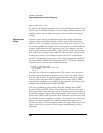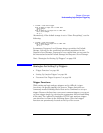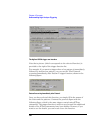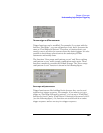
198
Chapter 4: Concepts
Understanding Logic Analyzer Triggering
Branches
Branches are similar to the Switch statement in the C programming
language and the Select Case statement in Basic. They provide a
method for testing multiple conditions. Each branch has its own
actions. An example of multiple branches is shown below:
1. If ADDR < 1000 then Go To 2 <- This is a branch of Level 1
Else If ADDR > 2000 then Go To 3 <- This is a 2nd branch of Level 1
Else If DATA = 2000 then Trigger <- This is a 3rd branch of Level 1
2. If DATA <= 7000 then Trigger
3. If there is a Rising Edge on SIG1, then Trigger
In sequence level 1, there are three branches, so there are three
possible actions that can be taken.
When the condition of one branch is met, none of the branches below it
are tested. In other words, there is no way for more than one branch to
be executed based upon a single sample, even if the sample causes the
conditions for more than one branch to be met. In other words, each
branch is an “Else If”.
Next: “Edges” on page 198
Edges
Edges represent a transition from low to high or high to low on a single
signal. Typically, edges are specified as “rising edge”, “falling edge”, or
“either edge”, where “rising edge” indicates a transition from a low to a
high. On most logic analyzers, up to two edges can be included in the
trigger sequence although some allow only one.
Next: “Ranges” on page 198
Ranges
Ranges are a convenient method for specifying a range of values, such
as “ADDR in range 1000 to 2000”. Most logic analyzers also support a





